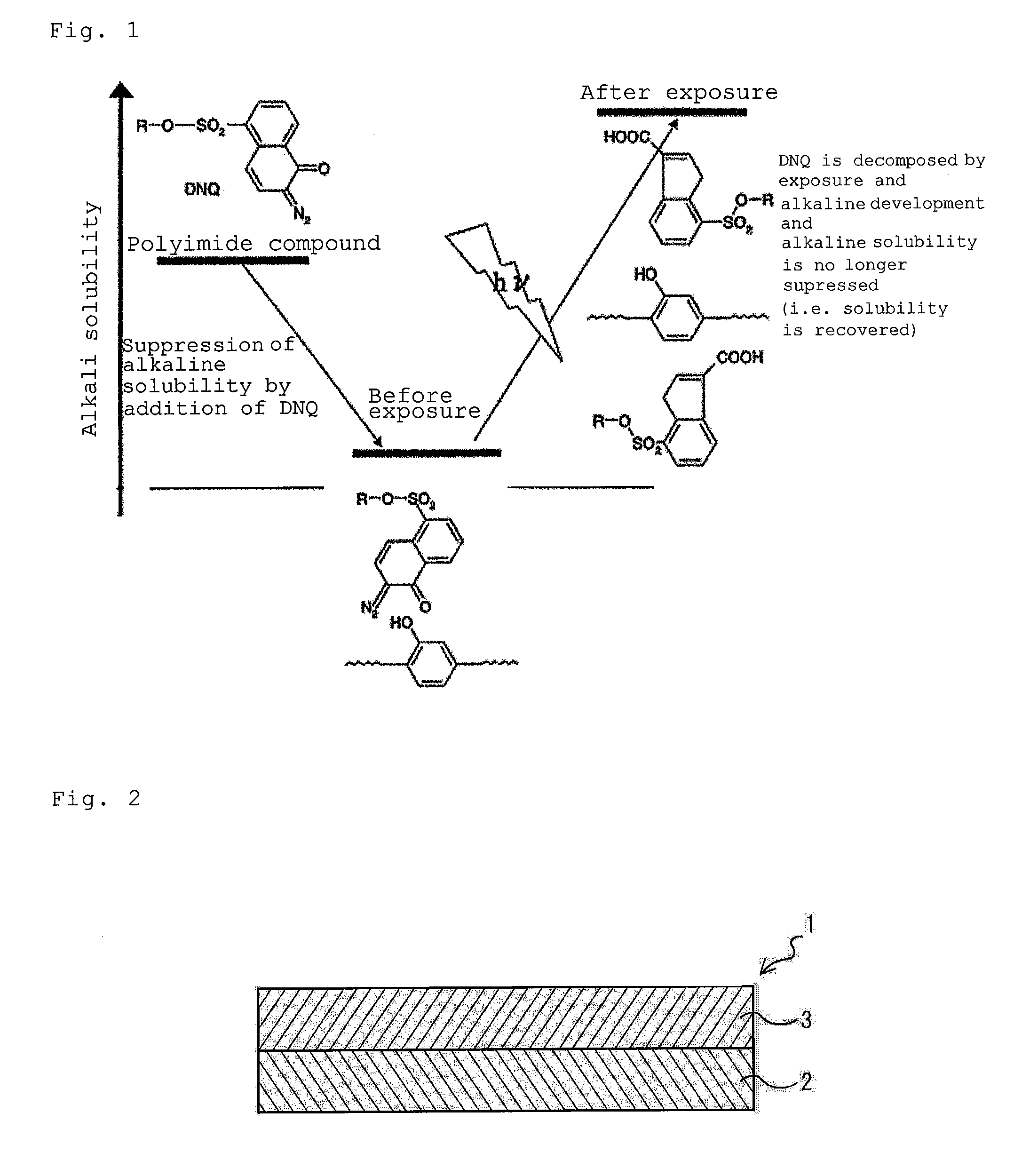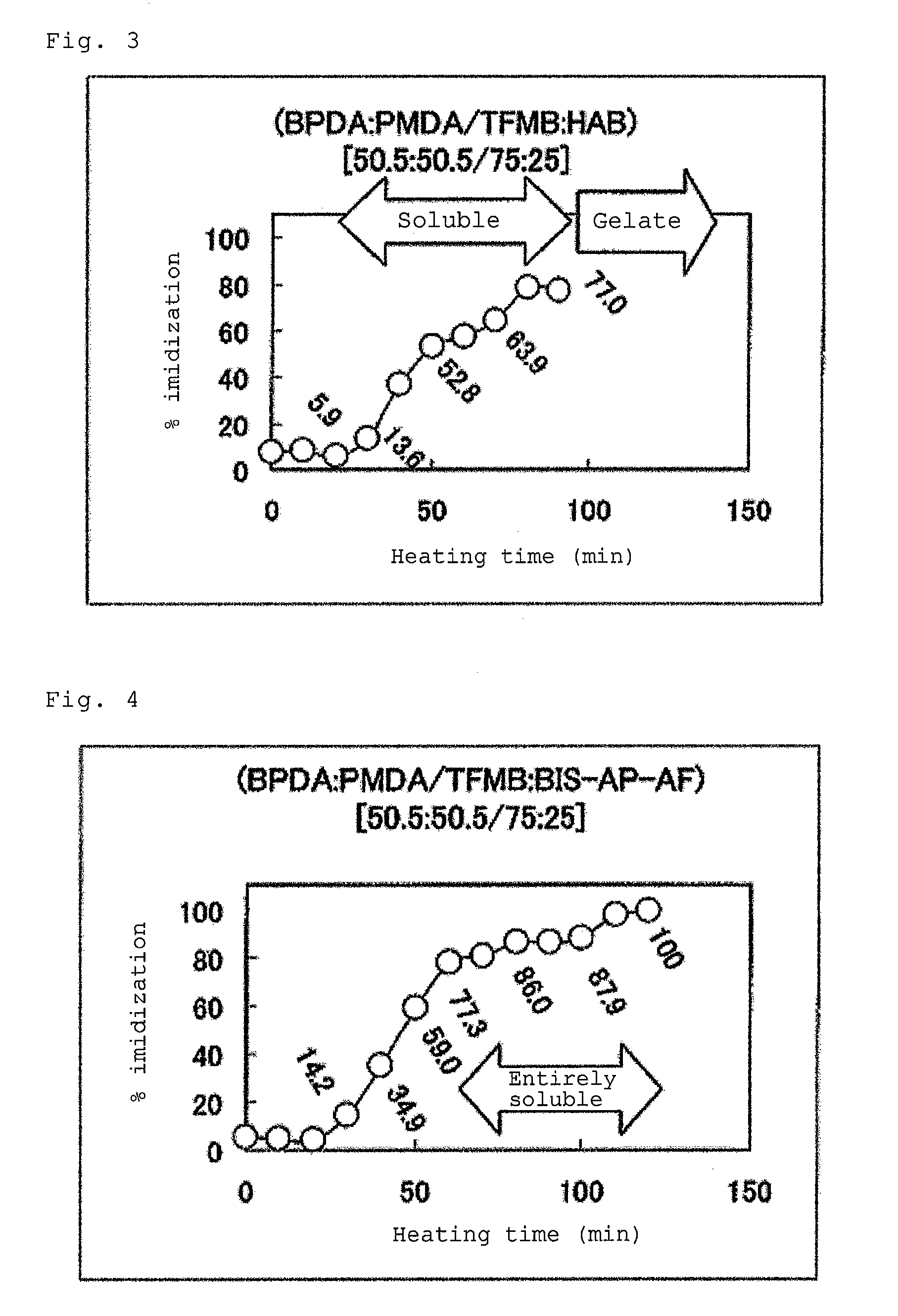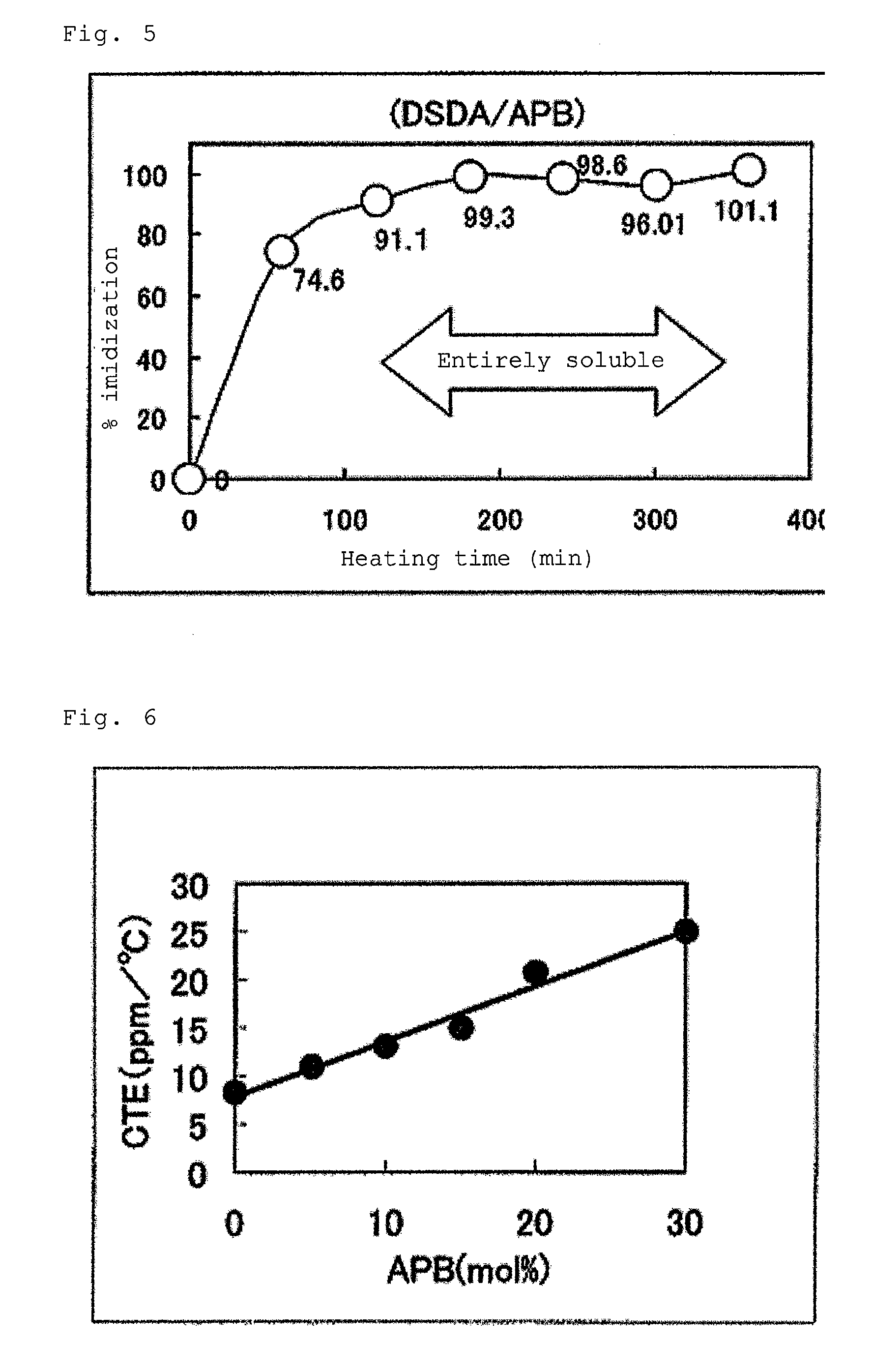Polyimide compound and flexible wiring board
a technology of polyimide compound and flexible wiring board, which is applied in the direction of photosensitive materials, instruments, photomechanical apparatuses, etc., can solve the problems of oxidation of conductors, affecting the dimension stability of conductor patterns, and the flexible wiring board to curl, so as to increase the solubility of polyimide compound, and high the effect of polyimidization ra
- Summary
- Abstract
- Description
- Claims
- Application Information
AI Technical Summary
Benefits of technology
Problems solved by technology
Method used
Image
Examples
example 1
Solubility of Polyimide
[0099]Several polyimide compounds were prepared by reacting different acid dianhydrides with different diamines including TFMB. Specifically, the compounds were prepared as follows. In a 500 ml four-necked flask equipped with a stirrer and a nitrogen tube, a stoichiometric amount of one of the diamines was dissolved in NMP at room temperature under a stream of nitrogen (flow rate=50 ml / s). Once the diamine was completely dissolved in NMP, a stoichiometric amount of one of the acid dianhydrides was gradually added to the reaction vessel in small portions and the mixture was stirred at room temperature for not less than 1 hour to carry out polymerization. This gave a viscous polyamic acid as the polyimide precursor. The concentration of the polyamic acid in the reaction vessel was controlled to 10 to 15 wt %, giving a total amount of 250 g. A Liebig tube, a distilling column and a toluene tube were then attached to the reaction vessel. The polyamic acid solution...
example 2
Alkali Solubility
[0105]To form a positive pattern with the polyimide compound, diamines were selected that can make the polyimide compound soluble in an alkaline solution when the polyimide compound was applied to the conductor. In Example 2, the acid dianhydrides and the diamines that showed relatively high solubility in NMP in Example 1 were used. Specifically, the acid dianhydrides used were PMDA and BPDA and the diamine used was TFMB. A diamine with an acid component was also used to provide the solubility in an alkaline solution. Specifically, HAB and BIS-AP-AF, each a diamine having phenolic hydroxyl groups, and 5,5′-methylenebis(anthranilic acid) (MBAA), a diamine having carboxylic acid groups, were used.
[0106]In a similar manner to Example 1, the acid dianhydrides PMDA and BPDA, the diamine TFMB and the diamine HAB, BIS-AP-AF or MBAA were reacted with each other to obtain polyimide compounds with specific imidization rates. Each polyimide compound was evaluated for the solub...
example 3
Imidization Rate
[0109]In a similar manner to Example 1, polyimide compounds with specific imidization rates were prepared by using the combinations of reactants that produced the favorable results in Examples 1 and 2: The acid dianhydrides PMDA and BPDA, the diamine TFMB and the diamine HAB or BIS-AP-AF. The imidization rate of each polyimide compound was adjusted by varying the heating time. The relationship between the imidization rate and the solubility in NMP was examined for each compound. The results are shown in FIGS. 3 and 4. For comparison, the relationship between the imidization rate and the solubility in NMP for the polyimide compound formed from DSDA and APB is shown in FIG. 5.
[0110]As shown in FIG. 3, which shows the relationship between the heating time and the imidization rate, the polyimide compound dissolved in NMP when the imidization rate was about 80% or below. In comparison, the polyimide compound gelated when the imidization rate was higher than 80%. It has be...
PUM
| Property | Measurement | Unit |
|---|---|---|
| mol % | aaaaa | aaaaa |
| mol % | aaaaa | aaaaa |
| temperature | aaaaa | aaaaa |
Abstract
Description
Claims
Application Information
 Login to View More
Login to View More - R&D
- Intellectual Property
- Life Sciences
- Materials
- Tech Scout
- Unparalleled Data Quality
- Higher Quality Content
- 60% Fewer Hallucinations
Browse by: Latest US Patents, China's latest patents, Technical Efficacy Thesaurus, Application Domain, Technology Topic, Popular Technical Reports.
© 2025 PatSnap. All rights reserved.Legal|Privacy policy|Modern Slavery Act Transparency Statement|Sitemap|About US| Contact US: help@patsnap.com



